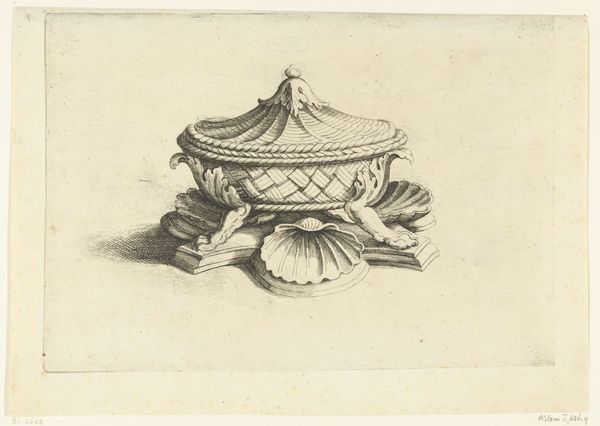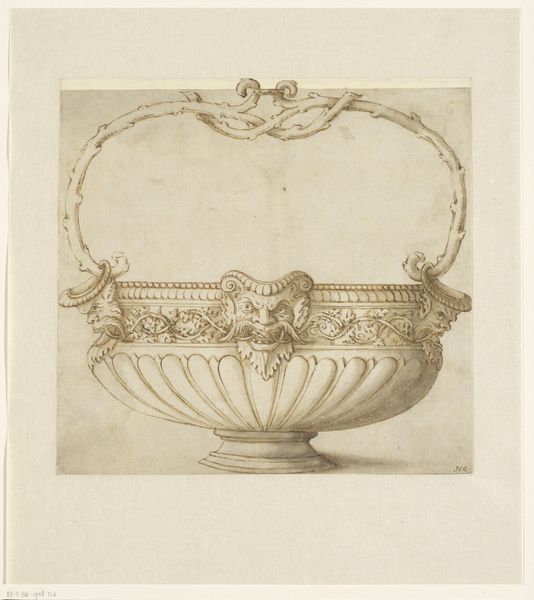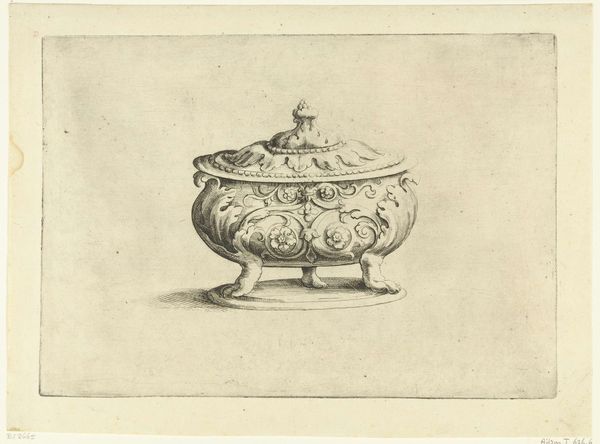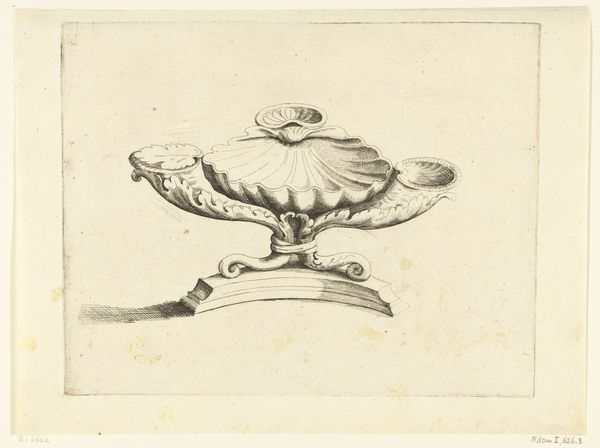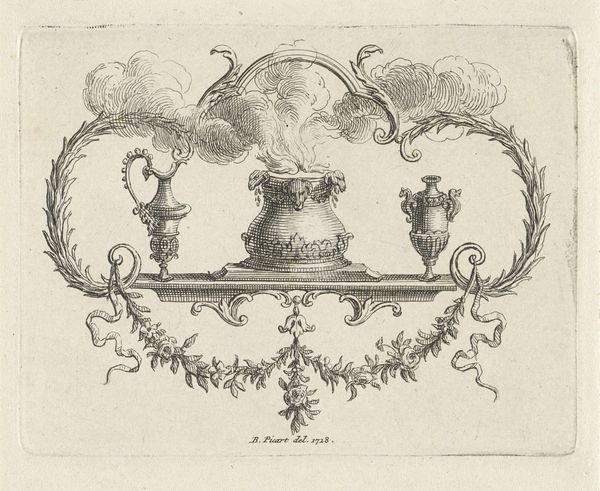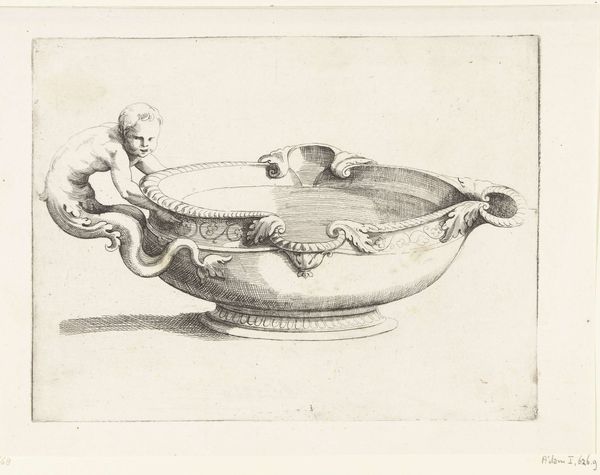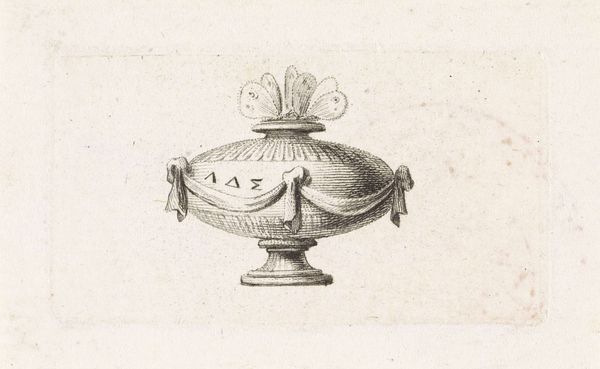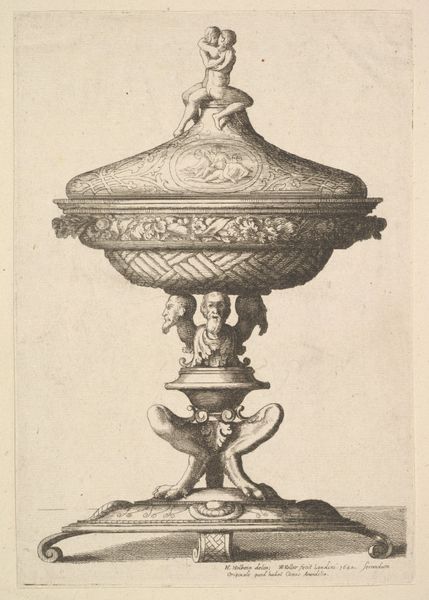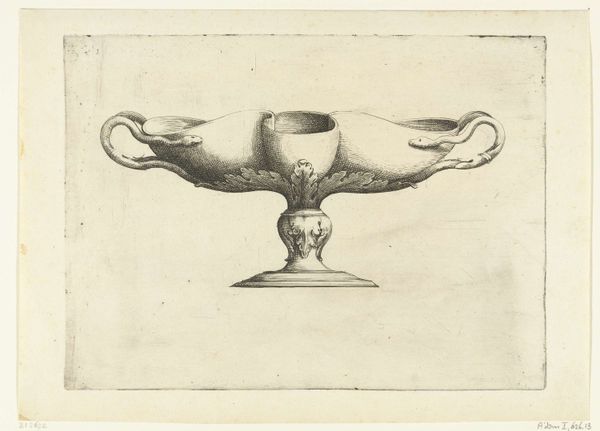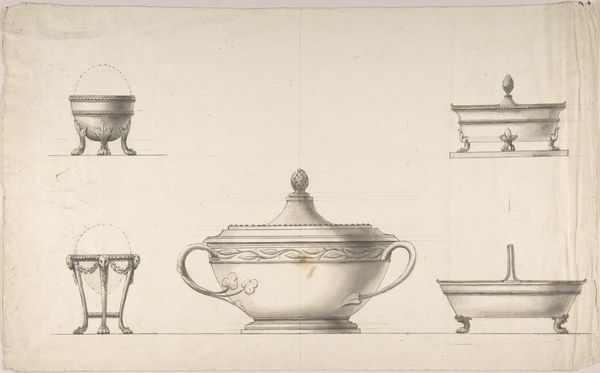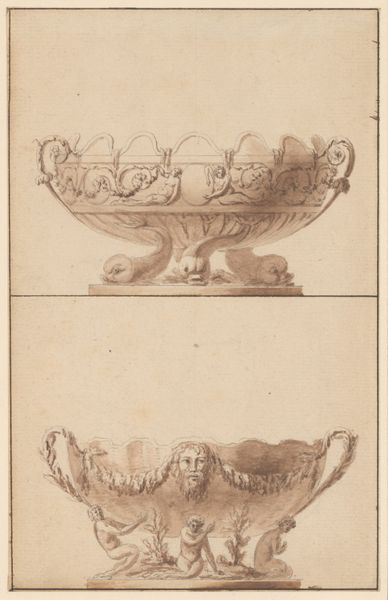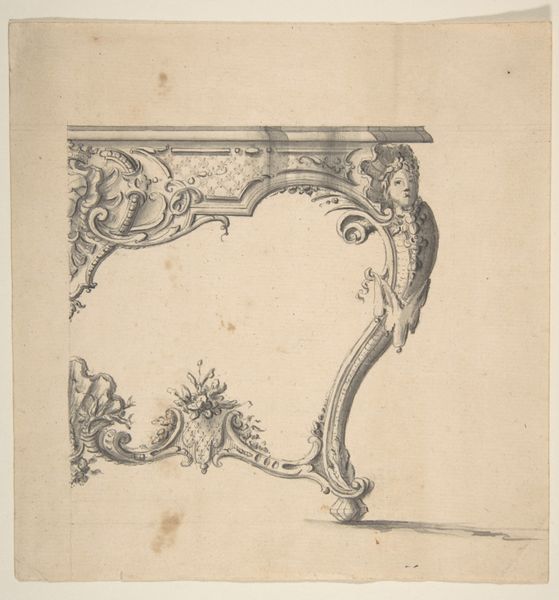
Schaal met een deksel en een oor gevormd door een tak c. 1614 - 1654
0:00
0:00
drawing, print, metal, engraving
#
drawing
#
baroque
# print
#
metal
#
engraving
Dimensions: height 161 mm, width 215 mm
Copyright: Rijks Museum: Open Domain
Curator: Here we have Hendrik van der Borcht II’s engraving, dating from around 1614 to 1654, titled "Schaal met een deksel en een oor gevormd door een tak.” Roughly translated, it's a bowl with a lid and a branch-shaped handle. Quite the mouthful, isn’t it? Editor: It feels both practical and fantastical at once. The sharp lines give it an air of precise craft, but the decorative details around the handle… that's where it escapes the purely functional. It's like holding nature in your hands. Curator: Absolutely! As an engraving, its value stems from the artisanal labor—each line carefully etched. Look at the repetitive detail just under the lid. Think of the skill required to uniformly depress that design by hand, a commitment to craft elevating utilitarian objects. Editor: That contrast, you're right. High art, or supposedly, rooted in a very grounded production. I'm intrigued by the almost playful incorporation of the natural world – the branch-handle, for instance. It is so much more appealing to use a naturally shaped handle as compared to a typical manufactured metal handle. Does it challenge that strict division? Curator: It blurs those boundaries entirely, I believe. In the Baroque period, the aesthetic valued ornamentation and complexity, something a branch, sculpted with precision, lends itself to magnificently. Imagine, someone choosing nature and molding metal in a conversation. The social context would have been consumers eager to show a knowledge and appreciation for both artifice and nature. Editor: It's a lovely contradiction. Is it supposed to contain food, perhaps? Or meant to just sit beautifully on a shelf and simply represent the owner’s taste? Curator: My bet is both. Silverware like this signified prosperity, but it also spoke to a sophisticated engagement with design. It tells tales of aspiration, blending utility with overt displays of wealth. What begins as a way to hold or carry, expands into something that needs admiration from its design. Editor: So, more than just looking at a pretty engraving, we’re glimpsing an entire world, all packed within this single object? The status and intention woven together, right here. Curator: Precisely! It invites us to reconsider not just craftsmanship but to also contemplate what these everyday things communicated back then—a reminder of value and also something beautiful that endures to today, still.
Comments
No comments
Be the first to comment and join the conversation on the ultimate creative platform.
